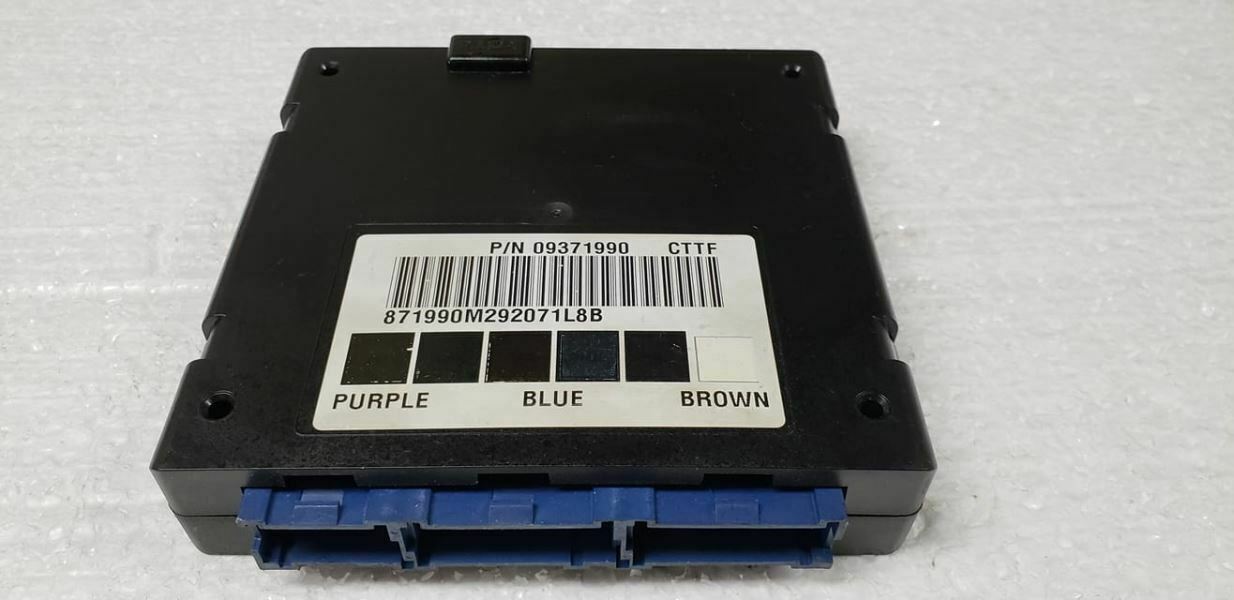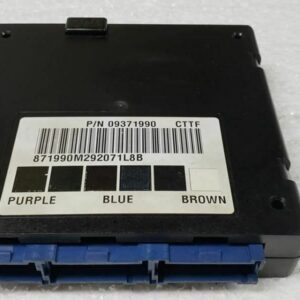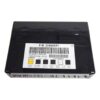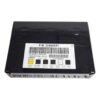Restore Control and Reliability to Your GM Truck
If your 2000 GMC Yukon XL 1500 is suffering from strange electrical gremlins—flickering lights, malfunctioning power windows or locks, or a security system that has a mind of its own—a failing Body Control Module (BCM) is the most likely culprit. As the central command center for your vehicle’s body electronics, a faulty BCM can cause a cascade of frustrating and unpredictable problems. This direct-fit BCM is the definitive solution, arriving at your door pre-programmed to your truck’s specific VIN for a straightforward installation.
From the Diagnostic Bay: The Case of the Haunted Silverado
I remember a 2000 Silverado 1500 rolling into my shop a few years back. The owner was at his wit’s end. The dome lights would stay on, the radio would randomly shut off, and the anti-theft light would flash, preventing it from starting. He’d already replaced the battery and checked all the fuses. After connecting my scan tool, I saw a dozen communication codes (U-codes) pointing to a network failure. The common link? The BCM. These modules, especially on this GMT800 platform, are notorious for internal solder joint failures over time. We swapped in a VIN-programmed BCM just like this one, and every single issue vanished instantly. It’s a classic repair I’ve done hundreds of times.
Is Your Truck Showing These Symptoms?
A failing BCM can manifest in many ways. If you’re experiencing any of the following, this module is likely the solution you need for your 2000 Yukon XL 1500 BCM problems.
- ✔ Power windows, door locks, or mirrors operating erratically or not at all.
- ✔ Interior or exterior lights flickering, staying on, or not turning on.
- ✔ The security or anti-theft light is illuminated, causing a no-start condition.
- ✔ The radio or instrument cluster randomly powers down.
- ✔ Inconsistent or non-functional heating and A/C blower motor.
- ✔ Diagnostic Trouble Codes (DTCs) related to communication errors, often starting with ‘U’ (e.g., U1000, U0140).
A Straightforward Guide to Installation
We make this repair as simple as possible by programming the module before it ships. This eliminates the need for an expensive trip to the dealership for software flashing. While this is a DIY-friendly job, you must follow the correct procedure.
- Safety First: Always disconnect the negative terminal from your vehicle’s battery before starting any electrical work.
- Locate the BCM: On most compatible trucks and SUVs like the Yukon, Tahoe, and Silverado, the BCM is located under the driver’s side of the dashboard, to the left of the steering column.
- Disconnect and Remove: Carefully unplug the electrical connectors. They have locking tabs that must be depressed. Once disconnected, remove any bolts or clips holding the old BCM in place and take it out.
- Install the New Module: Seat the new, pre-programmed BCM into the mounting position and secure it. Reconnect all electrical connectors, ensuring they click firmly into place.
- Power Up: Reconnect the negative battery terminal. Turn the ignition to the ‘ON’ position (without starting the engine) and test all body functions like lights, locks, and windows.
Important Post-Installation Information
With a new 2000 Yukon XL 1500 BCM installed, your vehicle should function correctly. However, in some cases, the vehicle’s other computers need to be re-synced to the new module. Please be aware of the following potential procedures:
- Airbag System Sync: If your airbag warning light is on after installation, a ‘Setup SDM Primary Key in BCM’ procedure is required. This must be done with a professional-grade diagnostic tool to sync the airbag system and clear the light.
- Brake Pedal Position Relearn: On some models, a brake pedal position sensor recalibration might be needed to ensure correct brake light and traction control operation. This also requires a compatible scan tool.
- No Core Charge: You are not required to return your old module. This saves you time and the hassle of a core deposit.
Verified Vehicle Compatibility
This Body Control Module is a guaranteed fit for the following vehicles when matching part number 9385236, 9371990, or 19208539. Please verify the ID on your original module before ordering.
- ✔ 2000 Chevrolet Tahoe (LH dash)
- ✔ 2000 Chevrolet Suburban 1500 & 2500 (LH dash)
- ✔ 2000 Chevrolet Silverado 1500 & 2500 Pickup (LH dash)
- ✔ 2000 GMC Yukon (exc. Denali) (LH dash)
- ✔ 2000 GMC Yukon XL 1500 & 2500 (LH dash)
- ✔ 2000 GMC Sierra 1500 & 2500 Pickup (LH dash)
- ✔ 2001 Chevrolet Blazer S10 / GMC Jimmy S15 (center dash)
- ✔ 2001 Chevrolet S10 / GMC Sonoma (center dash)
- ✔ 2001 Oldsmobile Bravada (center dash)
- ✔ 2001 Chevrolet Astro / GMC Safari (LH dash)
Frequently Asked Questions
How does the VIN programming work?
After you place your order, you will need to provide us with your vehicle’s 17-digit VIN. Our technicians use this to load the latest GM-certified software onto the module, making it specific to your truck’s options and features for a plug-and-play installation.
Do I have to perform the airbag or brake relearn procedures?
Not always. Many installations do not require these extra steps. They are only necessary if you have a corresponding warning light (like the airbag light) after the new BCM is installed.
Why is there no core charge?
We simplify the process for you. By not requiring the old part back, we eliminate the need for a core deposit, return shipping, and waiting for a refund. You can simply keep or dispose of your original module.
How do I find my original BCM part number?
The part number is printed on a white label directly on the BCM housing. You will need to access the module, typically under the driver’s side dash, to read this label and confirm it matches one of the compatible numbers listed.
Will this fix my ‘Service 4WD’ light?
While the BCM communicates with many systems, a ‘Service 4WD’ message is more commonly related to the Transfer Case Control Module (TCCM) or the encoder motor/sensor on the transfer case. It is important to get an accurate diagnosis before replacing parts.



